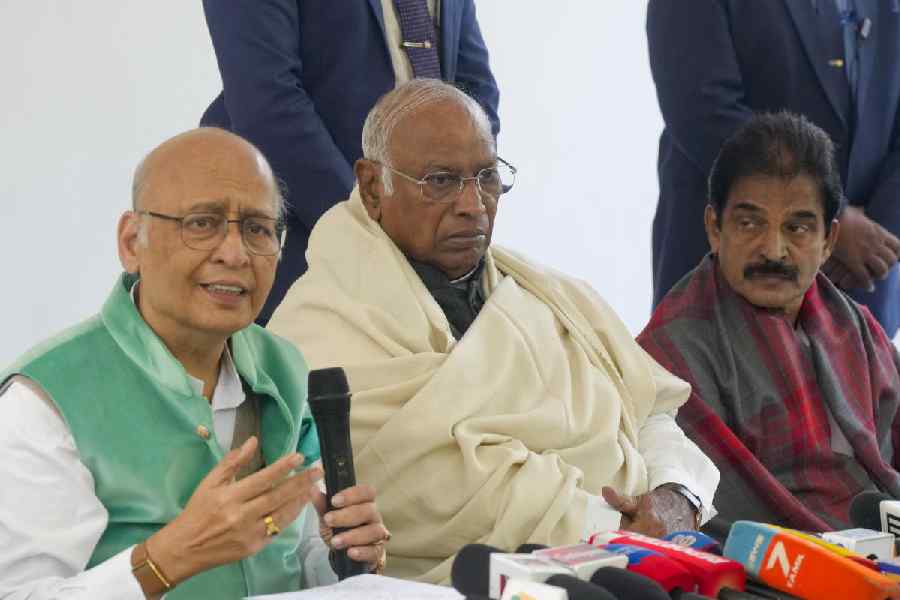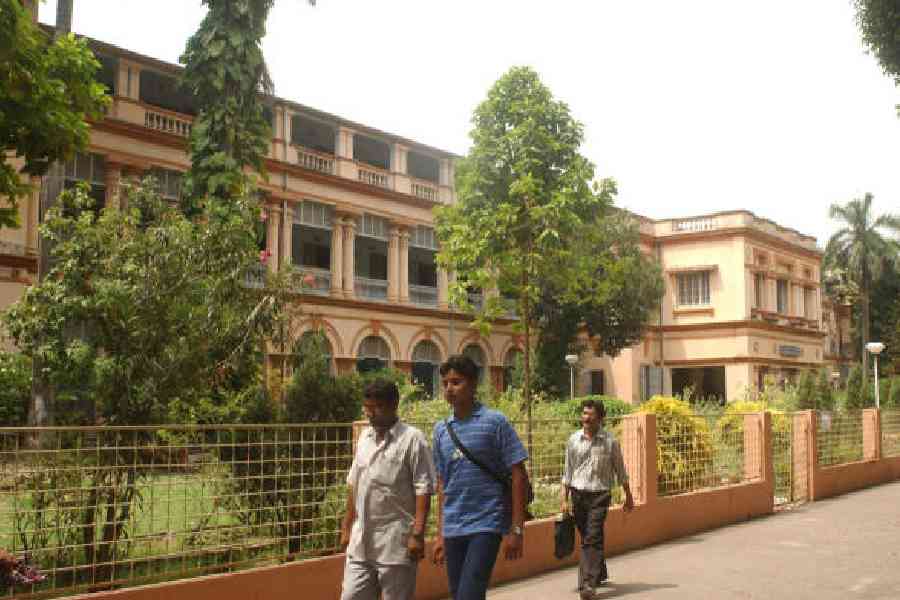 |
It’s a mid-winter weekday in Delhi, and the world is on a sleeping pill. Our car is on a winding road that has just tapered off from the Delhi-Gurgaon route. Farmhouses chase matchbox barsatis. Odd patches of mustard fields jut in. We stagger towards filmmaker Muzaffar Ali’s headquarters, Kotwara Studios. The car halts, triggering a swirl of Indian farmland dust.
We bound up the stairs to Ali’s studio. Perched on Delhi’s fringes, its walls are in love with the colour brown. Earthen tones settle us down. Ali’s office is neither too close to the city nor far from grasslands — apposite location for a man whose sensibility is a median between both. Posters and framed shots from his films Gaman (1978) and Umrao Jaan (1981) lure us into prolonged spells of staring. Farooq Shaikh, the romantic hero of Ali’s films, casts his spell on us, and we — two 30-somethings in the office — opt to look out of the window. On the terrace of the building opposite, a woman is drying her knee-long hair — a detail Ali would perhaps lovingly dwell upon. Viewers of the scene (with receding hairlines) are smitten.
A wizened, 64-year-old Muzaffar Ali walks in, and catches us both — the voyeurs and the viewed. “One of the first things I learnt as a filmmaker was to ‘see,’” he remarks, as we sit down for machine-made coffee and a cosy, freewheeling conversation. “I learnt that it was not about the things you see, it’s about how you see them.”
Ali, in his grey gabardine trousers and linen kurta, is still a romantic if grandfatherly sight. He has the air of a mystic and intones in a timbre just louder than a whisper. One may easily misread his laidback affability for complacency, or old-world ‘Lakhnavi tehzeeb’: the man is aesthetics and ease embodied. But his hands are full, and then some.
Ali’s been working on two films: Zoonie is on the life of 16th century Kashmiri poetess Hubba Khatun (which has been in the pipeline since 1989), while the second film is on the life of Shah Jehan’s wife Noor Jehan. Both are in advanced stages of pre-production and he complains “that it is tough to raise money for classic films.” For the film on the Kashmiri poetess, Ali has experimented in terms of the narrative. “I had her different moods become four different seasons,” he says. “That’s a very strange thing to do. It’s the sort of thing that would drive a Bollywood hero mad.”
He spent two years in Kashmir to integrate its landscape, ethos and nature into his psyche. “People know method acting, but this was method direction,” he quips. As for the film on Noor Jehan, he “wants to keep things under wraps.”
As talk veers, our eyes wander to some of the landscapes on his wall competing with Farooq Shaikh and Rekha. “Those are from Turkey,” he says about his own works in oil. Outside of the stop-start work on the films, Ali has been frequenting Turkey a number of times for a documentary on medieval Turkish poet Jalaluddin Rumi. Turkish stints have re-invigorated his love for the paint brush and the colour palette. “These are not for sale,” he says.
But he’s only in a mood to talk films, and classic films at that. Ali is not greatly impressed by the recent historical movies coming out of Bollywood. For a man who spends at least two weeks a month in hometown Kotwara in Lucknow (he belongs to a former royal family of Kotwara just north of Lucknow), Ali has a deep appreciation for rural texture and landscape and how they need to be captured visually. He cites the instance of Jodhaa Akbar and underlines severe limitations in the movie.
Stylisation is artistry with authenticity. It’s something people enjoy more than anything else in a film,” he says. He points out that the film was shot in Maharashtra and just did not have the “crispness and the bite of the north Indian winter.” But he doesn’t stop there either. In terms of his pet theme “stylising”, he feels “contemporary era films do a better job.” Portions of Taare Zameen Par evoke approval.
What did he make of his own Umrao Jaan remake, a 2006 film that was panned by critics and viewers alike? “I haven’t watched it,” he says. “But the response of the people who saw it was predictable.” (Read: not very good; why dabble with a classic in any case? What the hell did the filmmaker think of himself? Etc.) Ali, clearly, is not a great fan of attempts to remake his classic. “There was an Umrao Jaan made in Pakistan too but the Pakistanis rejected their own Umrao Jaan and accepted mine.”
As the eldest among three children, and a half-sister from his Turkish step-mother, Ali recalls childhood being a pastoral reverie. At an age he can’t remember precisely, Ali began sketching and fell in love with Urdu zubaan and Sufi poetry. After schooling in Lucknow, he went to study science at the Aligarh Muslim University (AMU) “but came out ready to dive into the Arts.” At AMU, he rubbed shoulders with and befriended poets such as Shahryar (who wrote the lyrics for Umrao Jaan) and dramatist Asghar Wajahat. By then, Ali had totally soaked up the likes of poets Faiz Ahmed Faiz and Ahmed Faraz. However, there was cinematic and visual cultivation to be had too. Calcutta beckoned.
In the early 1970s, Ali worked for advertising firm MacLaren McCann and met Satyajit Ray. He watched the films of Ray and Ritwik Ghatak, and dreamt of doing something similar. But Ali, clearly, has reservations about Ray’s film on Awadh Shatranj Ke Khiladi (1977). He extols Ray’s oeuvre, before making his disappointment clear. “Sanjeev Kumar was totally miscast. His diction was totally wrong. So was the case with Victor Banerjee. But Amjad (Khan) had style,” he says. “My full regards and respect to him, but Ray was a very Anglicised person. And he saw Wajid Ali Shah (the exiled Nawab of Awadh) from an English point of view.”
So Ali went on to make Jaan-E-Alam — a TV series on Wajid Ali Shah — in 1986. “I wanted to bring out his secular character and popularity with both Muslims and Hindus. Secular, modern India has its roots in personalities like Wajid Ali Shah,” he adds.
Years before, the importance of roots and the growing rural-urban divide resulted in his touching, dreamy debut Gaman. The decline and fall of the old world, the onset of British imperialism, and of late, the rabid and rapid urbanisation of interior India have been running themes through Ali’s corpus.
In between, Ali loved and married — more than once. He admits having “Leftist sympathies” during his time in Calcutta (and later). Consequently, he married Left leader and trade union activist Subhashini Ali (she designed the costumes for Umrao Jaan). Their son, Shaad Ali, is the director of hit films such as Saathiya and Bunty Aur Babli — “both were good entertainers.” His other son, Murad Ali, wears many hats like his father, having acted in films such as Is Raat ki Subah Nahin and Dil to Pagal Hai, and has dabbled in poetry and music.
Ali later married designer and architect Meera Ali, and both teamed up to create a niche of sorts when it came to ethnic cloth designing with a unique Kotwara touch. They have a daughter, Sama, who is showing an inclination for designing.
The interview is winding down and we ask a last question as we make our way out. What does he prefer, the town or the city? “I like distance and balance between both,” he mumbles. Touché. Equidistance with equipoise.










